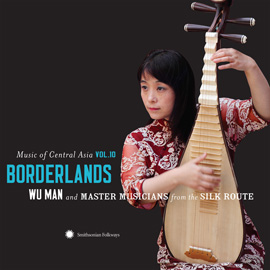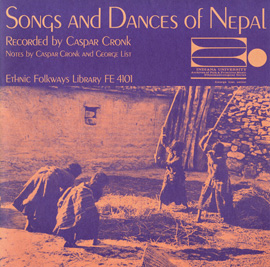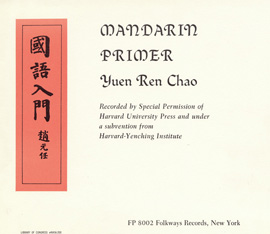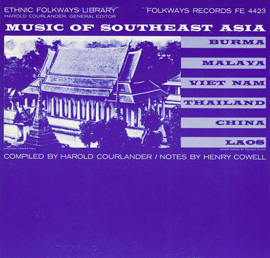Summary
Chinese music consists of many regional traditions that differ in form, style, quality and repertory (Lau, 2008). This curricular unit introduces some difang yinyue (regional music of China) and encourages children to discover characteristics of Chinese music by “travelling” around the eastern region of this country.
中国音乐蕴含许多地方传统,这些传统在形式、曲风、质量还有曲目都有所差异(Lau, 2008)。本专辑旨在介绍中国的地方音乐,并鼓励儿童以音乐遊历中国的东部,并发掘中国的特色。
Suggested Grade Levels: 3-5
Country: China
Region: East China: Jiangsu, Beijing, Shanghai and Liaoning
Culture Group: Chinese
Genre: Lullaby, vocal music, outdoor music, solo music, programmatic music
Instruments: Chinese instruments: Pipa, Zheng, Xiao, Voice, Suona, Sheng, Cymbals, Drum, Gong. Other instruments: Piano, recorders, glockenspiel, metallophone, xylophone, finger cymbals
Language: Cantonese
Co-Curricular Areas: Language, social studies, visual arts
National Standards: 1, 2, 4, 5, 6, 8, 9
Prerequisites: None
Objectives:
Students will:
- Identify some different Chinese instruments on the recordings.
- Perform a Chinese lullaby.
- Learn important Chinese music characteristics: pentatonic scale, melodic embellishment, programmatic music, solo music, vocal techniques, festival music (outdoor music).
- Learn the importance of regional music in China.
Material:
From Smithsonian Folkways
- Chinese Classical Instrumental Music
- Flowers Drum and other Chinese Folk songs
- The Silk Road: A Musical Caravan
Resources
- Yu, Ch. (2007). Chinese Masterpieces of the Pipa & Qin. Austria: Arc Music Productions
- Lau, F. (2008). Music in China. Experiencing Music. Expressing Culture. New York: Oxford University Press.
- Du, Y. (2004). Ritual Music in a North China Village: The continuing Confucian and Buddhist Heritage. Chicago: Chinese Music Society of North America.
- Wiant, B. (1965). The Music of China. Hong Kong: Chung Luen Printing Company
- Jianzhong, Q. (1999). Chinese Music. Chinese culture and Arts Series. Beijing: Culture and Art Publishing House.
- So, J. F. (2000). Music in the Age of Confucius. Washington, D.C; Sackler Gallery.
- He, L. (2009). Classical Chinese Folk Music. Featuring the Chinese Flute. Chen Dacan Chinese Ensemble. Austria: Arc Music Productions
Other materials
- Ribbon
- Paper and paint
- Chinese map
- Pictures of the instruments and videos
Lesson Segment :
- Chinese programmatic music (National Standards 6, 8, 9)
- Chinese melodic embellishment and solo music (National Standards 6, 8, 9)
- Chinese vocal music and pentatonic scale (1, 2, 4, 5, 6, 8, 9)
- Chinese outdoor music (National Standards 2, 5, 6, 9)
1. Chinese programmatic music
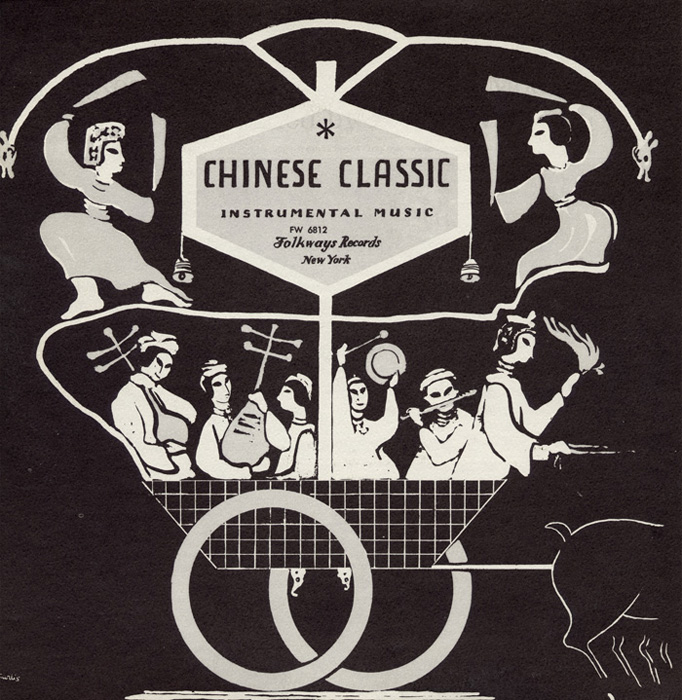
“Moonlight on the Ching Yang River”
from Chinese Classical Instrumental Music | FW06812
- Play the introduction of “Moonlight on the Ching Yang River”. Before playing the piece for the first time, ask students to think about the following questions while they are listening:
- Where is the music from? Think about reasons for this choice.
- Identify China on the map. Talk about selection musical and cultural dimensions relative to China. Ask children:
- Is Chinese music the same in every region of this large country? (No, it is not. Read excerpts from “Music in China”).
- Inform students that this song is from Jiangsu region, which is located in the central-east of China. On a map of China, point to this region or paint it in another color. Show some photos of this region and its people.
- Explain the importance of regional music in China. China is a massive country of many climatic, geographic, and cultural regions, and each region has its own music. (Read excerpts from “Music in China”).
- Tell the students that the classroom “trip” to the east of China is going to start in this region. What kind of music do you expect to hear during this “trip”? (Let the children create a hypothesis).
- Programmatic music is a typical manner and form of Chinese music.
- Play the introduction of “Moonlight on the Ching Yang River” again and ask:
- Which kind of landscape do you imagine? (Let the imaginations fly).
- Tell students that this music is called programmatic music, and each section of music can be identified visually with a picture. As is mentioned in the album details of Cheng Yu (2007), the introduction gives us the image of the sound of a bell and a temple drum along the river. (Compare this picture with descriptive comments from the students)
- Explain to students that programmatic musical pieces contain poetic titles that help to conjure up particular images. In essence, the music functions as a narration or ‘sound-painting’ of stories that the composer has in mind. Let students understand that music can be a powerful resource for describing and portraying many stories. (Read excerpts from “Music in China”).
- Listen again and see if they can imagine the scene of moonlight on a river at night.
- Recognize the instruments of the introduction.
- Listen again and ask:
- Which instruments do you recognize? (Pipa, zheng, xiao. Read excerpts from “Music in China” to get information about the instruments).
- Explain some characteristics of these instruments and show some pictures or the real instruments. (Read excerpts from “Music in China”).
Extension
- In a visual art lesson, the teacher can paint a Chinese landscape based in the materials that they can find on the internet or in books. Then, in the music class, students may be challenged to compose a piece with different instruments or materials that represent this landscape.
- In social studies, there can be discussions about the geographic composite that is China, including the differences of each geographic region (weather, economy, population, history, traditions...).
2. Chinese melodic embellishment and solo music
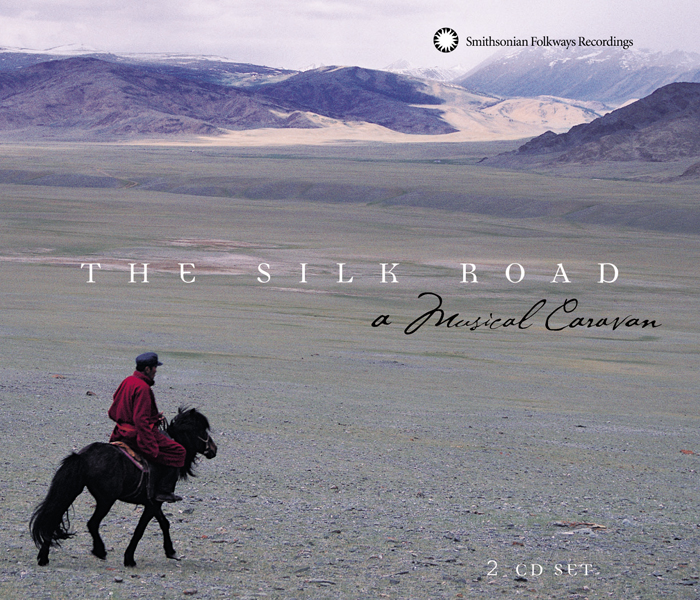
“Xiao Yue Er Gao”
from The Silk Road: A Musical Caravan (2002) | SFW40438
- Play the introduction of “Moonlight on the Ching Yang River”
- Ask the children to:
- Describe the sound of each instrument, including the Pipa, Zheng, and the Xiao.
- Identify some characteristic of the melody. (Repetition and additional notes).
- Melodic embellishment.
- Explain to the children that melodic embellishment is one of the characteristics of Chinese music. (Read excerpts from “Ritual Music in a North China Village”).
- Listen to the music following the graphic (included).
- Sing the notes written in the graphic illustration.
- Solo music and melodic embellishment. Play “Xiao Yue Er Gao”.
- Before playing the piece for the first time, ask students to think about the following questions while they are listening:
- Which instrument can you recognize? (Pipa)
- How can you describe the melody? (melodic embellishment)
- What differences do you notice from the other piece? How many instruments do you hear? (Solo music).
- Contextualize the song
- Show the map of China and point to the region of Shanghai. Give some information and show some pictures.
- Discuss the history of the instrument. Also talk about characteristics of the instrument and watch some videos in order to see how it is played, the movement of the fingers and the picks.
- Representing the embellishment.
- Play “Xiao Yue Er Gao” and use movement and painting to represent the characteristics of the melody. The teacher can propose the movements or can ask the children to find movements that represent the embellishment of the melody.
- Follow the melody with your hands
- Discuss the embellishment of this piece: tremolo, repeated notes, high and low melodies, different kinds of tempos, ritardando, rubato...
- Ask some children to choose a color and try to “paint the music” on a big sheet of paper. After that, analyze the graphics each child has painted.
- Do different movements for each part of the piece. Each child has a ribbon in his or her hands and tries to follow the embellishment of the piece moving the ribbon.
One example of movement can be:

Extension:
In visual arts try to make Chinese shadows with “Xiao Yue Er Gao”. (Google “chinese shadow” for more information.)
3. Chinese vocal music and Pentatonic scale
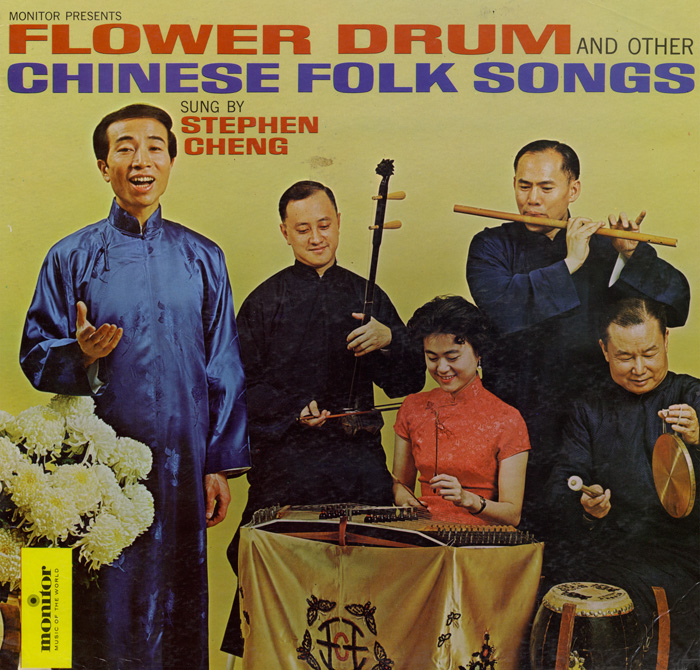
“Two Lullabies: Purple Bamboo / Cantonese Lullaby (medley)”
from Flower Drum and Other Chinese Folk Songs (1994)| MON71420
- Play and perform “Purple bamboo”.
- Before playing the piece for the first time, ask students to think about the following questions while they are listening:
- Which instruments can you recognize? (voice and xiao).
- Does each instrument play the same melody? (They play almost the same melody, but the xiao embellishes the melody with some additional notes).
- Which kind of song do you think it is? (Lullaby)
- How do you describe the voice of the singer? (Read excerpts from “Chinese Classical Instrumental Music)
- Contextualize the song.
- Show the map of China and point to the region of Beijing. Give some information about this region, show some photos.
- This song is a lullaby. Compare with some lullabies that the children may know, talk about the characteristic of this kind of music (soft, slow...).
- Learn the song
- Teach vocal melody to all students, singing the song numerous times, inviting students to hum, sing on a neutral syllable, sing some (but not all) words, and so on.
- Pay attention to the lyrics. Give them the translation (included). Discuss the meaning of the song: This song refers to the gift that Chinese parents give to their son. Which gift is chosen first is thought to indicate the child’s profession in later life. In this case, they choose a musician because the gift is a flute.
- Identify the notes of the melody (if their level is high enough, have the students read the score and write the notes).
- Explain the pentatonic scale, another characteristic of Chinese music. The five-tone (pentatonic) scale is the basis of the melody.

- Perform arrangement, score 1, on instruments. (included)
- Note the distinction between Chinese authentic instruments and the instruments students will be using. Explain that in spite of the instrumental differences, one can use the same stylistic concepts that the Chinese would use.
Extension
- Perform another arrangement, score 2 (included) with recorder, voice and piano. Try to explain the relationship between the melody of the recorder and the voice.
- Create world music with the pentatonic scale. Use the pentatonic scale of “Purple bamboo”. With metallophones and xylophones to experiment with the pentatonic scale. Try to use Chinese musical resources that students have already learned in this curricular unit.
- In language lesson talk about Chinese language. See the difference between a pictorial language and a phonetic language.
4. Chinese outdoor music

“Shawm and percussion band from Southern Liaoning”
from The Silk Road: A Musical Caravan (2002) | SFW40438
- Play “Shawm and percussion band from southern Liaoning”.
- Ask the students to keep the beat.
- Explain that the Chinese term for beat is pai.
- Is there any instrument that keeps the beat in this piece? (cymbals)
- Identify the instruments.
- What sorts of instruments do you hear? (2 suona, sheng, drum, cymbals, gongs)
- Give some information about the instruments (Read excerpts from “Music in China”). Show some pictures.
- Listen again and ask additional questions:
- Where is this music played? (Outside, in the street). For what reason? (Festival)
- Who has the melody of the song? (Suona)
- Is this music loud or quiet? (Loud)
- Show the map of China and point the region of Liaoning, the last region of our “trip”. Give information about the region, show different pictures.
- Talk about the outdoor music, festival music.
- Ask students about the differences from the other pieces that they learned.
- Show the instruments of the piece, specifically the suona, that plays the melody and is used to play outdoors because of its loud sound. (Read excerpts from “Music in China”.
- Try to find some videos to show the children outdoor music and the instruments.
- Read and perform the rhythm of the drum in “Shawm and percussion band from southern Liaoning”.
- First do some exercises clapping the different rhythms of the score to activate the knowledge of the children.
- Read the rhythm of the drum. Clap the rhythm.

- Perform the rhythm with drums
- Play “Shawm and percussion band from southern Liaoning” and perform the rhythm at the same time.
- Tell students that most Chinese music is based on a binary meter.
Information about the piece and instrument:
Souna is a conical instrument with a flared metal bell derived from the Persian zurna or sunray. Around the 15th century, they started to become common among the Han Chinese and assumed a central place in celebrations of life-cycle and calendar events. One of the most admired styles of suona music is played in northeast China, where this track was recorded during a New Year celebration at Wafangdian, Dalian municipality, Liaoning Province. On this track, two suona accompanied by a sheng (free-reed mouth organ), drum, cymbals, and gongs repeat simple tunes with continuous variation in an excerpt from a suite of short melodies. The musicians belong to the Gongxiao Dasha Ensemble, whose eponymous patron is a large department store chain.(Liner note)
Text excerpts
- Lau, F. (2008). Music in China. Experiencing Music. Expressiong Culture. New York: Oxford University Press.
“As some experts say: Chinese music is made up of many regional genres, and one usually needs to identify the region from which a music originates. (...) This tie to a specific region is manifested in multiple ways such as dialects, cultural practice, food, and music. Together, these cultural practices become emblems of a regional identity”.
“The use of programmatic titles is an important feature in Chinese music. Programmatic music is music that narrates a story or refers to something concrete in reality, such as scenery, nature, a flowing stream, a flock of flying geese, and high mountains. It can also be poetic in tone and can depict historical events, human emotions, or states of mind”.
“Pipa (four-stringed fretted lute). The pipa is held upright and played with finger picks attached to the righthand fingers. The history of the Pipa dates back to the Han dynasty (202-220 c.e). The pipa was imported from Central Asia along the Silk Road”.
“Zheng is a plucked zither with twenty-one string. Zheng is believed to have existed before the Qin dynasty (221-207 B.C.E). Strings are mounted over triangular-shaped moveable bridges. The right hand plucks the strings while the left hand alters the pitch by pressing and pulling the strings. The Zheng is tuned to a pentatonic scale, and the twenty-one stringed model has a range of four octaves”.
“Xiao is a vertical-notched bamboo flute with four or five fingers holes in the front and one in the back. It has a narrow body and a delicate timbre. Its range is about two octaves. In its early history, the xiao was used in Confucian ritual”.
“Suona. A double-reed aerophone similar to a shawm, an instrument that has a plate on which the lips rest. Like most Chinese wind instruments, a suona comes in various sizes. It is used mainly in outdoor ensembles and processions”.
“Sheng (mouth organ). According to archaeological evidence, the mouth organ is one of the oldest Chinese wind instruments. It is the only Chinese wind instrument capable of producing two or more tones simultaneously. The sheng is made up of a bundle of bamboo pipes of various lengths mounted on a small gourd-shaped wind chamber. A thin brass reed is attached to the end of each bamboo pipe before it is inserted inside the wind chamber. Sound is produced by blowing and sucking the air through a wooden or metal tube connected to the base and by closing the holes on selected pipes. The sheng is a versatile instrument that is used in many regions as both a solo and an accompaniment instrument”.
- Du, Y. (2004). Ritual Music in a North China Village: The continuing Confucian and Buddhist Heritage. Chicago: Chinese Music Society of North America.
“One important method of embellishment results from the addition of extra notes to the melodies to elaborate them. This technique is generally called “adding flowers”. The purpose of this is to enliven and enrich the original skeletal version with embellishments”.
- Chinese Classical Instrumental Music. Liner notes by Henry Cowell
“It is known that sliding tones played a very great part in the playing and singing, and there is every reason to believe that a highly nasal tone-quality was highly prized”.
Lyrics and translation for “Purple Bamboo”
I-ken tzu chu chih miao-miao
Sung yu bao-bao tso
Kuan hsiao,
Hsiao-erh tui cheng k’ou,
K’ou-erh tui cheng hsiao
Hsiao bao-bao
u-ti u-ti
Hsueh hui liao!
One straight purple bamboo
For my precious one to make a flute
Put the flute to your lips,
Your lips to the flute
The flute blows out new melodies
My little precious one
Yu-ti-yu-ti you have learned it now!






